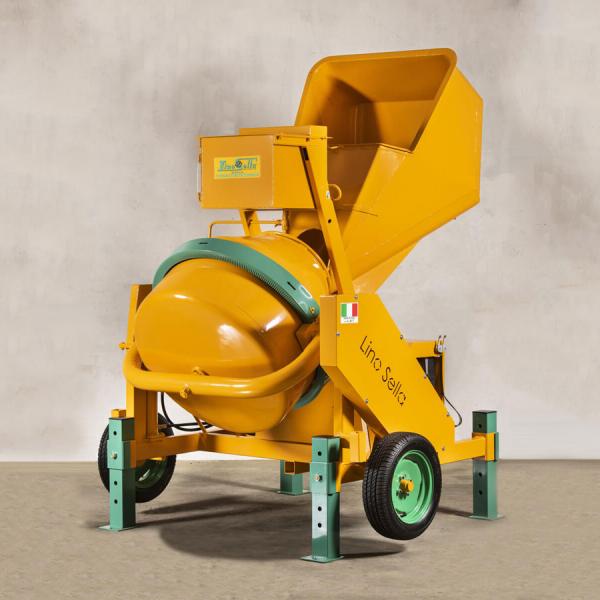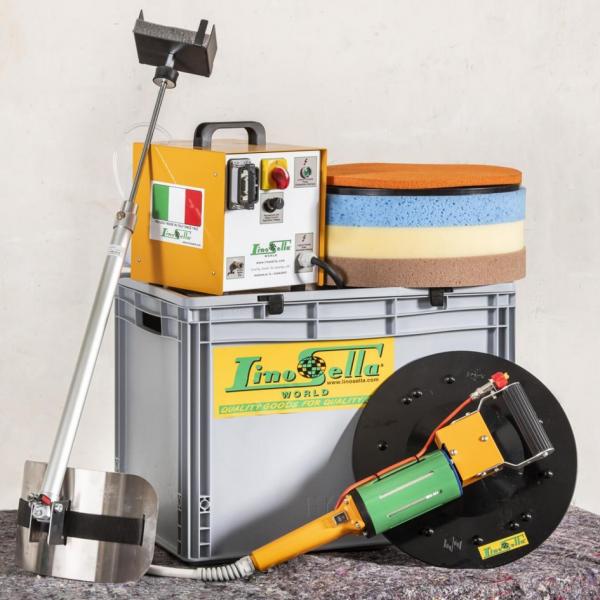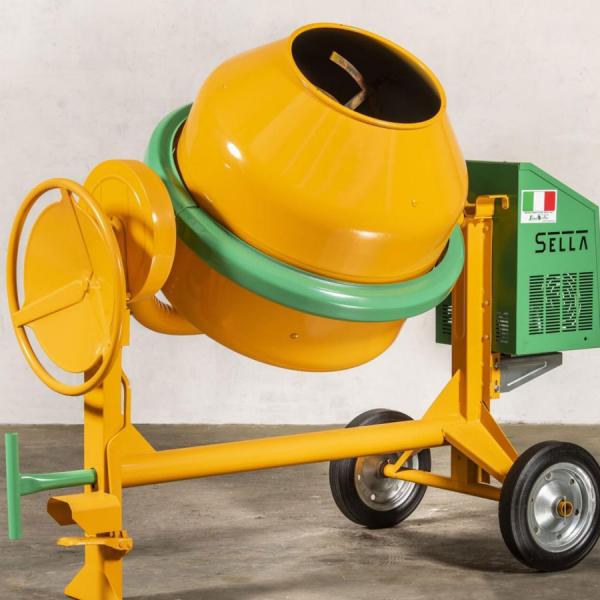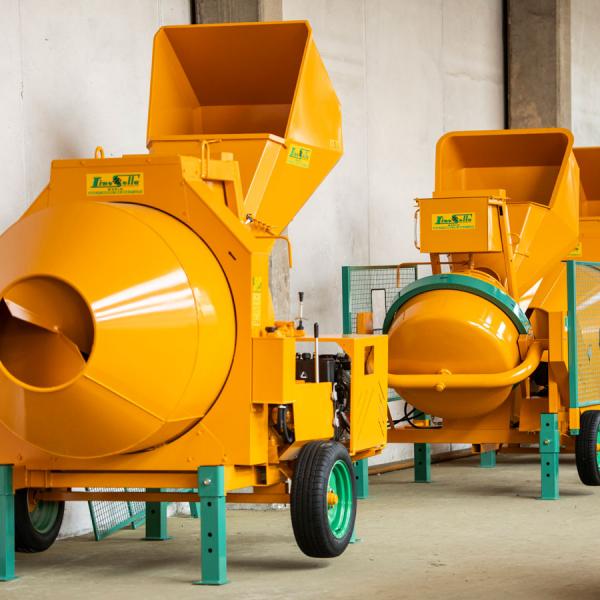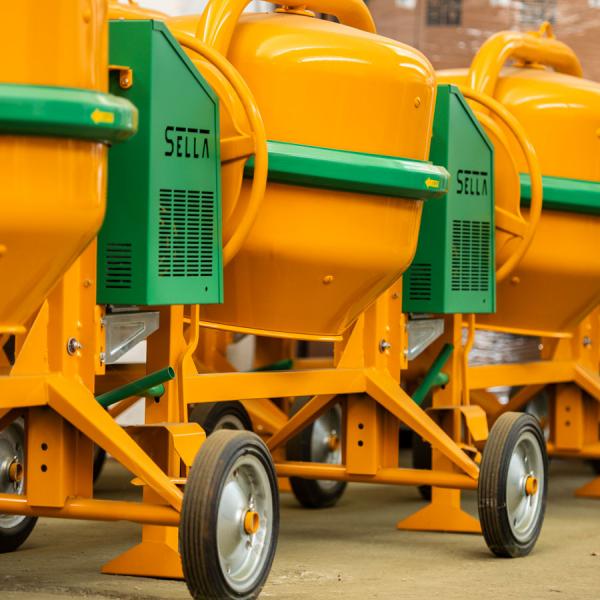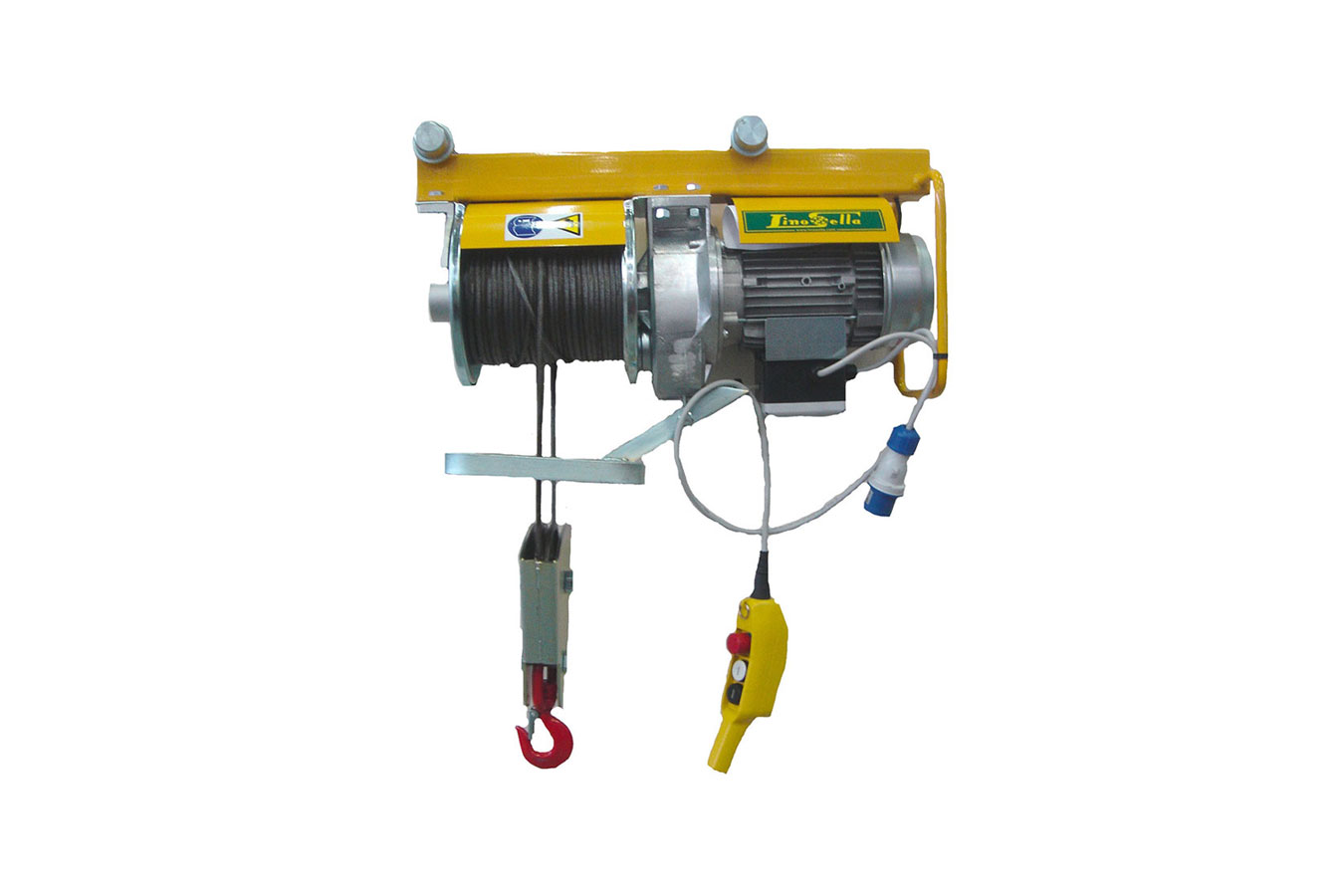
Reliable solutions for materials handling on the building site
Construction hoists are essential tools on building sites, designed to facilitate the vertical movement of heavy materials and improve the efficiency of operations. These devices allow materials such as concrete, sand, bricks and building equipment to be lifted quickly, reducing manual effort and minimizing the risks associated with manual handling of loads. Hoists are an indispensable solution on any building site, from small renovations to the most complex construction projects.
Construction hoists not only improve site efficiency, but also play a crucial role in operator safety. Manual handling of heavy loads can pose risks of injury, but the use of a hoist significantly reduces these hazards, ensuring a safer and more controlled process. In addition, with easy operation and intuitive features such as a push-button panel with up and down controls and an emergency button, these machines can be operated easily and safely.
Lino Sella offers a range of hoists that stand out for their quality, reliability and ease of use. All hoists are electric and can be operated on single-phase (220 volts) or three-phase (380 volts) voltage, depending on the needs of the building site. Each hoist arrives already assembled, ready to be placed on a stand and used immediately. This feature greatly simplifies initial assembly operations and reduces preparation time, allowing you to start work quickly.
With these features, the hoists offered by Lino Sella are key tools for improving efficiency, productivity and safety on building sites, making material handling easier and faster.
The advantages of construction hoists: safety, efficiency and versatility
The use of hoists offers many benefits, including increased safety, efficiency and versatility. Here's how these machines can improve operations on building sites:
- Safety: manual lifting of heavy materials is a major cause of work-related injuries. With hoists, the risks associated with transporting heavy loads are drastically reduced. Materials are lifted automatically via a hand control, ensuring safe and precise handling, reducing the physical effort of operators and minimizing the risk of accidents.
- Efficiency: hoists save valuable time by reducing material handling time. Instead of manually transporting equipment or construction materials to the various floors of the building site, operators can use the hoist, allowing them to focus on other tasks and thus improving overall project productivity. This means that work goes on faster and in a more organized way.
-
Versatility: another strength of hoists is their ability to adapt to different needs. They can be used to lift various types of materials, including:
- building equipment such as buckets, tools and utensils;
- construction materials such as concrete, sand, and bricks.
You might also be interested in: The advantages of the portable concrete mixer for small construction work
This versatility makes them indispensable on all types of building sites, from the smallest to the most complex projects. With a choice of single-phase and three-phase electric models, construction hoists by Lino Sella are designed to offer an efficient and safe solution, adapting perfectly to different jobsite needs.
Types of hoists suitable for every building site
When choosing a construction hoist, the decision depends on the specific needs of the building site and the type of loads to be lifted. Let's look at the main types of hoists and their specific uses.
- Flag-mounted hoists: these are ideal for lifting lighter loads on different floors, such as building equipment or small materials. They operate by means of a horizontal arm to which the hoist is attached. Advantages of flag-mounted hoists include ease of use and small attachment dimensions. They are perfect for building sites with limited space or for jobs where mobility is critical.
- Gantry-mounted hoists: these models are designed for lifting heavier loads. Gantry-mounted hoists are ideal for small or large building sites. They offer great stability and strength, ensuring that heavy loads are handled safely and efficiently.
The different types of hoists offer solutions suitable for all types of building sites, from small renovations to large construction projects. Selecting the right hoist based on the type of work and the loads to be lifted is essential to ensuring a safe and efficient worksite.
Tips for choosing the right hoist for your building site
Choosing the right hoist for your building site is critical to ensure efficiency and safety in the vertical transport of materials. Each construction site has specific needs, so it is important to consider several factors when selecting the most suitable construction hoist.
Here are some practical criteria to consider.
- Load capacity: the first factor to be evaluated is the amount of material the hoist will be called upon to lift. If the site requires lifting heavy materials, such as large quantities of concrete or bricks, it is essential to opt for a hoist with a high load capacity. For lighter loads, such as equipment or tools, a flag-mounted hoist may suffice, offering a smaller load capacity but greater maneuverability.
- Lift height: the choice of hoist must also consider the maximum lifting height required. Lino Sella hoists are available with single or double rope, have a standard height of 25 meters but the length can be customized according to the customer's needs.
- Type of materials to be lifted: for bulky and light materials, a flag-mounted hoist might be the right choice. For heavy and compact materials, such as bags of cement or blocks, a hoist with a gantry attachment will be more suitable.
- Site size and characteristics: layout and available space on the site are other variables to consider. On building sites with limited space, a compact flag-mounted hoist can facilitate lifting operations. On larger and more complex building sites, where large amounts of material need to be transported, a gantry-mounted hoist offer superior performance.
With these factors in mind, choosing the right hoist ensures greater operational efficiency, improving safety and reducing work time.
Key components of construction hoists: reliability and durability
Construction hoists are composed of a number of essential components that ensure their optimal operation, safety, and durability. Each part is critical to ensuring that the hoist can lift heavy materials safely and reliably, allowing the site to operate efficiently.
Let's look together at the main components of a hoist:
- Motor: a powerful and reliable motor allows heavy materials to be lifted without interruption, ensuring that the hoist runs steadily for long hours. High-quality hoists are equipped with efficient electric motors, with single-phase 220-volt or three-phase 380-volt options, providing sufficient power for the most demanding building sites. Engine power is critical to ensure that the hoist can handle heavy loads without excessive strain or overheating.
- Structure: hoists must be made of strong materials, such as high-strength steel, to be able to support the weight of moving loads. A solid structure not only ensures the durability of the machinery, but also ensures stability during use, reducing the risk of swaying or accidents during lifting.
- Safety system: these devices are equipped with safety brakes that stop the load in case of malfunction or power failure, preventing materials from falling. In addition, operator protection systems, such as safety barriers and emergency buttons, are essential to avoid injuries during lifting operations.
The quality of components in a hoist is crucial to ensure high performance and long machine life. Choosing a hoist built with durable materials and equipped with advanced safety systems means investing in equipment that improves jobsite productivity and protects operators.
Safety regulations for the use of hoists on building sites
The use of construction hoists on building sites is regulated by stringent safety regulations, both at the European and Italian levels, to ensure the protection of operators and the proper operation of equipment. Complying with these regulations is critical to preventing accidents and ensuring a safe working environment that meets the required standards. Among the requirements imposed is the obligation to use machinery equipped with appropriate safety systems, such as emergency brakes, automatic locks in case of malfunction, and operator guards.
Construction hoists manufactured by Lino Sella are designed to comply with all current regulations, offering advanced safety devices to protect both materials and operators. Built-in safety features include emergency brakes, which immediately stop movement in the event of a power failure or technical problem, preventing the load from accidentally falling. In addition, the hoists are equipped with automatic locks that ensure that the load remains stationary under any conditions.
Another essential element is the presence of emergency pushbuttons, which allow operators to stop the operation of the hoist if necessary, providing greater control and preventing dangerous situations. Following safety regulations is essential to use hoists correctly and safely, and thanks to the high standards offered by Lino Sella, it is possible to work with reliable equipment that complies with European and Italian guidelines.
How to ensure long-term performance and safety?
Proper maintenance of machines for construction hoists is essential to ensure that the machines operate efficiently and safely over time. A well-maintained hoist not only reduces the risk of malfunctions during use, but also helps extend the life of the equipment, ensuring a long-term investment. In a building site environment, where hoists are subjected to heavy and constant use, regular maintenance is essential to maintain optimal performance.
One of the first steps in the maintenance of hoists is the periodic inspection of major components. The motor, cables and brakes are crucial parts that should be inspected regularly for signs of wear or damage. A malfunctioning motor or frayed cables can impair the efficiency of the hoist and increase safety risks for operators. Lubrication of moving parts is also a key step to ensure that the hoist operates smoothly and without friction, preventing excessive wear and tear and sudden blockages.
Read more news and insights from the construction sector: Lino Sella World News
Read more news and insights from the construction sector: Lino Sella World News
Using Lino Sella spare parts for hoist maintenance is an additional guarantee of quality and reliability. Original spare parts are designed specifically for the machinery Lino Sella, ensuring a perfect fit and optimum performance. Replacing worn components with genuine parts ensures that the elevator continues to operate at maximum capacity, reducing the risk of failure and extending the operating life of the machinery.
In conclusion, regular and careful maintenance is the key to ensuring that hoists remain safe and efficient over time. With the support of spare parts and constant attention to operating conditions, Lino Sella machines can continue to deliver high and reliable performance on every job site.
After-sales service and technical support for construction hoists by Lino Sella
One of the main advantages of buying hoists by Lino Sella is the reliable after-sales service the company offers its customers. This service ensures that each customer receives continuous and tailored technical support, both for maintenance and proper use of the hoists. The team of experts at Lino Sella is always available to solve any technical issues and provide helpful advice to keep equipment in perfect working condition.
Lino Sella 's after-sales service is distinguished by its customer focus and the quality of support provided. Here are some of the main services offered:
- Dedicated technical support: a team of experts is always ready to answer technical questions and provide suggestions for the proper use of the hoists, helping to quickly resolve any inconveniences.
- Customized maintenance: the company offers tailored maintenance solutions to ensure that each hoist continues to operate efficiently and safely, minimizing downtime.
- Original spare parts: in case of replacement of components, Lino Sella provides original spare parts that ensure proper operation and maximum reliability of the equipment. Using genuine spare parts is essential to extend the life of hoists and maintain high performance over time.
Choosing a company like Lino Sella, which offers high-quality after-sales support, is critical to ensuring the long life of hoists. With a dedicated support team and genuine spare parts, Lino Sella ensures that equipment continues to operate at its full potential, delivering high performance even after years of use.
What to consider before buying a construction hoist?
When it comes to choosing and purchasing construction hoists, Lino Sella offers a buying experience aimed at meeting each customer's needs through a personalized approach and high-quality services. Every building site has specific material handling needs, and having the right equipment is essential to ensure efficient and safe work.
Factors to consider when purchasing
To make an informed choice, here are some aspects to consider when buying a hoist:
- Project specificity: it is important to take into account the type of building site and its specific needs. If the project involves the handling of light or heavy materials, the hoist chosen should meet these requirements.
- Work environment: the size of the work site, the presence of obstacles or confined spaces are factors that can influence the choice of the most suitable hoist model. For example, for urban building sites with limited access, a compact hoist may be the best solution.
If you're ready to choose your construction hoist, contact Lino Sella today for a dedicated consultation and find out which model best meets your needs!

